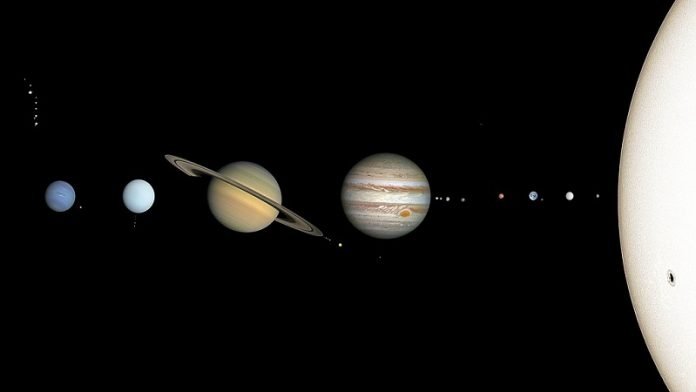
It’s nice to have a feel-good story every once in a while, so here’s one to hold off the existential dread:
The Earth isn’t likely to get flung off into deep space for at least 100,000 years.
In fact, all of the Solar System’s planets are safe for that time frame, so there is good news all around, for you and your favorite planetary body.
Maybe it’s worth backing up a little bit. The likelihood of Earth, or any planet, being bumped from its orbit is always slim.
As Newtonian physics tells us, an object in motion remains in motion unless acted upon by another force – and for something the size of a planet, it would take a significant force to push a planet off track.
But there are examples of planetary reshuffling in the Solar System’s own history.
One of the most broadly accepted models of Solar System formation, the Nice model, describes how the outer planets migrated early in the Solar System’s history, and would have wreaked havoc on the inner rocky worlds, possibly displacing or even swallowing smaller proto-planets in the process.
But now, researchers have done the math to show that such a migration is unlikely in the next 100,000 years. Angel Zhivkov and Ivaylo Tounchev from the Department of Mathematics and Informatics at Sofia University in Bulgaria used computer calculations to determine that the planets are likely to remain stable.
Their eccentricities (how much their orbit differs from circular) will stay small, as will their inclination (how far above or below the plane of the Solar System they travel).
Similarly, the semi-major axes (the radius of the longest part of an elliptical orbit) will not change significantly for any of the planets.
Even downgraded dwarf planet Pluto was included in this study, and diehard Pluto fans will be happy to know that it too is likely to do little more than oscillate a bit over the next 100,000 years.
So what happens after 100,000 years?
The farther you go in time, the harder predictions become, as the real Universe is always a little chaotic, but Zhivkov and Tounchev believe that “with simple additional reasonings and evaluations…the Theorem could be proven for one million years.” There’s not likely to be trouble in that timespan either.
And, if you’re really worried, all it would take is some additional computing power beyond what was accessible to the researchers, and “the stability of the solar system could be proved for the next five billion years,” they say.
Of course, the model isn’t perfect. It doesn’t take into account relativistic effects, and the math assumes that the planets are point masses, which, of course, in real life they are not.
But perhaps the most glaring omission from the calculation are the millions of smaller bodies in the Solar System: asteroids, comets, and everything in between.
On their own, the gravitational effects of these objects are negligible, but as a collective, over billions of years, they certainly could jiggle the planets around a bit. Including them all in the model would be a monumental task, and one with diminishing returns. It’s not something that should keep you awake at night.
So, Earthlings, Martians, and Jovians alike: take a breath and enjoy the ride. The next 100,000 years around the Sun are going to be smooth sailing. Don’t forget the sunscreen!
Written by Scott Alan Johnston.




